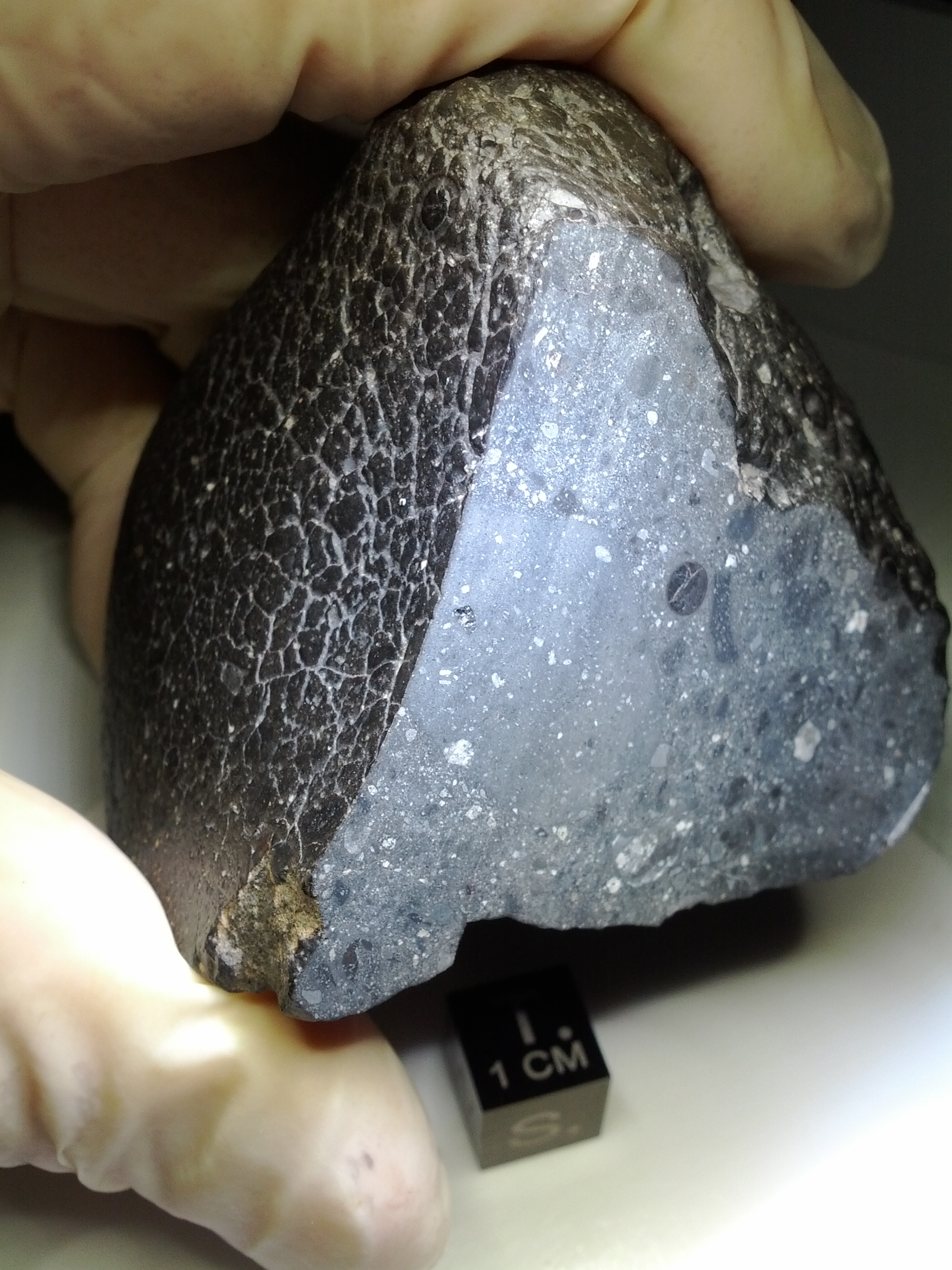
Credit: NASA, public domain, via Wikimedia Commons
Background
Synopsis: Tens of thousands of meteorites have been discovered on Earth, and scientists have identified 358 of them as originating from Mars. Detailed studies of these rare specimens have revealed how they traveled to Earth, provided insights into Mars' formation, and deepened our understanding of Earth's origins.
- Witnessing a meteor blazing through Earth's atmosphere as a "shooting star" is a mesmerizing sight. If the meteor survives its fiery journey and reaches Earth's surface, it is called a meteorite.
- To date, over 74,000 meteorites have been discovered on Earth. While most come from fragments of asteroids, 358 have been identified as originating from Mars.
- Astronomers believe these fragments reached Earth after massive asteroids collided with Mars, striking its surface with immense force. The impact propelled pieces of the Red Planet into space, where they might orbit the Sun for millions of years. With the right trajectory, they may be drawn into Earth's gravitational pull in lesser periods of time.
- How these rocks could be ejected from Mars and reach Earth was a mystery that a group at Caltech sought to answer. They simulated the impact of a massive asteroid collision on Mars using a new, high-powered blast gun. They conducted the tests with rocks from Earth containing plagioclase feldspar, a key component of Martian rocks.
- Under extremely high pressure, plagioclase transforms into a glass-like material called maskelynite. Earlier experiments suggested this transformation required pressures of 30 gigapascals (GPa)—equivalent to 300,000 times Earth's atmospheric pressure, or the weight of 100 fully loaded jumbo jets pressing down on an area the size of your thumbnail.
- However, the new blast gun, with its improved precision, revealed that this transition can occur at pressures between 17 and 22 GPa. These lower pressures offer a compelling explanation for how intact fragments of Martian rock could have been ejected into space during asteroid impacts and eventually make their way to Earth.
- Martian meteorites are classified into three different categories: shergottites, nakhlites, and chassignites.
- Shergottites are the most common and are named after a meteorite that fell in 1865 near the town of Shergotty, India [now spelled “Sherghati”]. Over 300 specimens are found to be composed of pyroxenes, types of silicates found in both igneous and metamorphic rock, and plagioclase, the mineral used by the Caltech researchers.;
- There are only about 25 confirmed specimens of nakhlites, so named from the location in Egypt where one was first found in 1911. These basaltic samples primarily consist of augite, making for large greenish crystals, and olivine, a silicate mineral.
- Chassignites are extremely rare with only two known samples recovered to date, one found in France in 1815 and one discovered in the Saharan Desert in 2000. The primary mineral in these two samples is olivine that has a high concentration of magnesium.
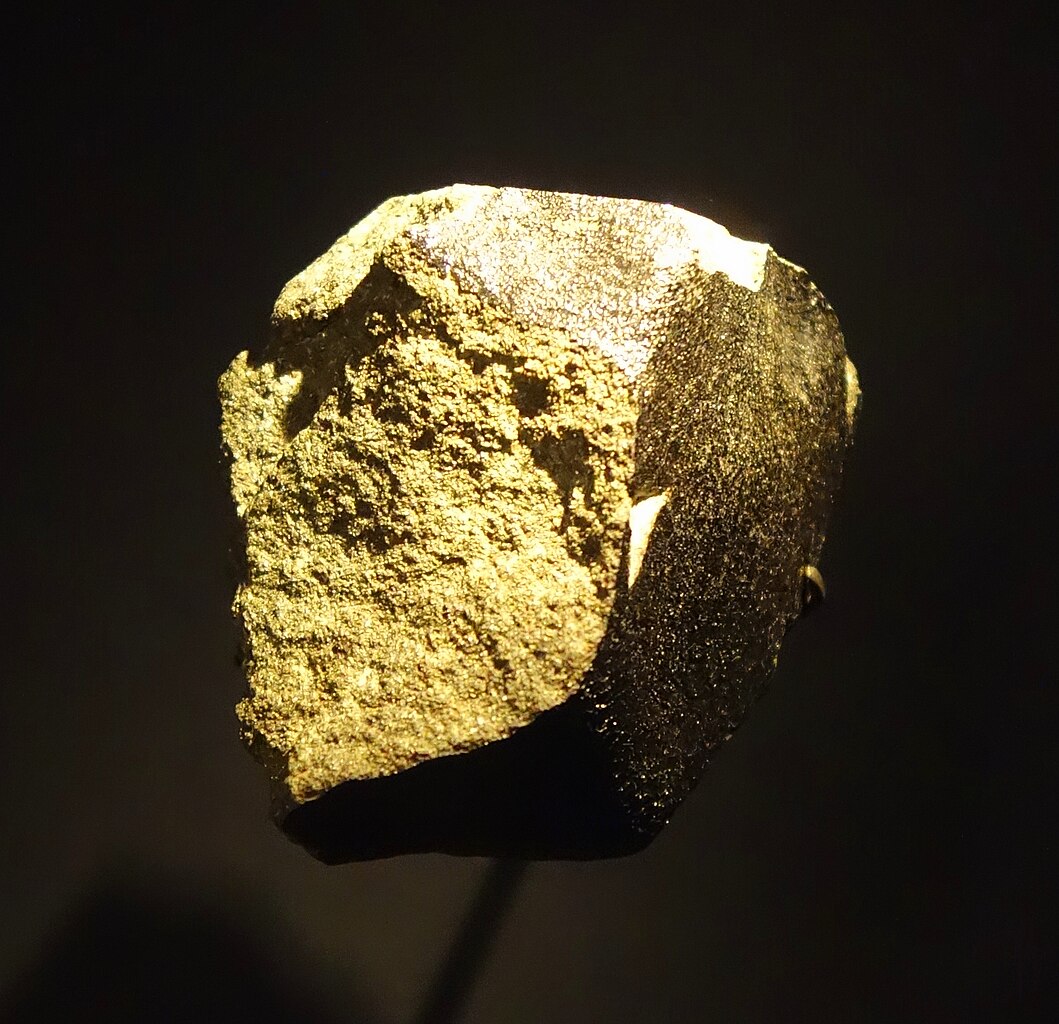
The original piece of the Nakhla meteorites which fell to Earth in 1911 near modern-day Abu Hummus, Egypt.
Credit: Daderot, CC0, via Wikimedia Commons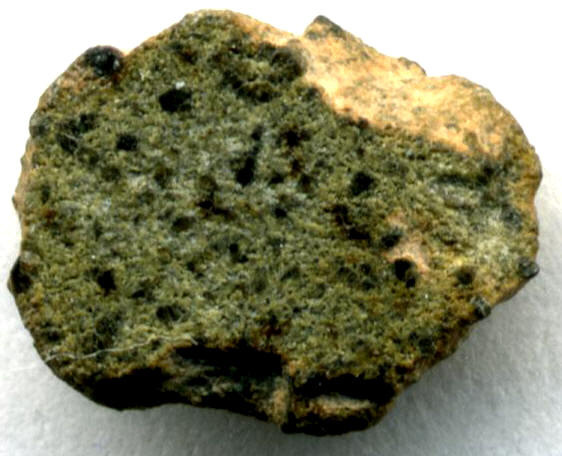
Another example of shergottite, NWA 2373, contains mostly olivine, pigeonite, and augite pyroxene along with the smaller amounts of glassy maskelynite.
Credit: James St. John, CC BY 2.0, via Wikimedia Commons
- The collected meteorites provide very telling information about Mars past geologic history.
- All three types of meteorites are volcanic in origin and contain trapped gasses that match the fingerprint of the Martian atmosphere measured from previous explorations of the planet.
- These explorations include the Viking 1 and 2 Lander and Orbiter that were launched in the mid-1970s and continued to report data from Mars through 1982.
- The meteorites also share a unique mixture of the three isotopes of oxygen, oxygen-16, oxygen-17, and oxygen-18, that also matches samples taken from Mars.
- Some of the rock samples contain radioactive elements that begin to decay once they are crystallized. From this radiometric dating, researchers can deduce that most Mars meteorites are as little as 175 million years old, while a few others are significantly older, as much as 4.5 billion years old.
- Chemical analysis showed that the nakhlites and chassignites were both sourced from the same volcanic eruption on Mars that occurred 1.3 million years ago. Their differences are due to different rates of crystallization that occurred, causing magma to harden into different structural shapes.
- Basalts, like nakhlites, are more abundant in the crust of both Earth and Mars, whereas olivine, like chassignites, are more abundant in the mantle of both planets.
- Confirmation that the nakhlites were closer to the crust is evidenced by the fact that some of the nakhlites samples were altered chemically by interactions with the Martian atmosphere.
- Black Beauty is the only known brecciated meteorite from Mars. Breccia is from the Italian word for rubble, meaning that the meteorite is made up of many rock fragments cemented together.
- An in-depth study of meteorite NSW 7034, Black Beauty, can reveal many portions of Mars past.
- Half a dozen different igneous rock types have been identified, providing clues about the planet's volcanic history and the types of geological processes that occurred there. It also hints at how the crust of Mars has evolved over time, which can be compared to Earth's geological history.
- However, a big portion of it also contains secondary materials—things that formed later due to processes like weathering or interaction with water. These secondary materials include “chunks,” small spheres, and pebbles, as well as minerals that hold water.
- The discovery of NWA 7034, known as "Black Beauty," significantly enhances our understanding of Martian surface rocks based on meteorite studies. Black Beauty serves as the first physical meteorite link to the rocks being analyzed directly by NASA's rovers on Mars.
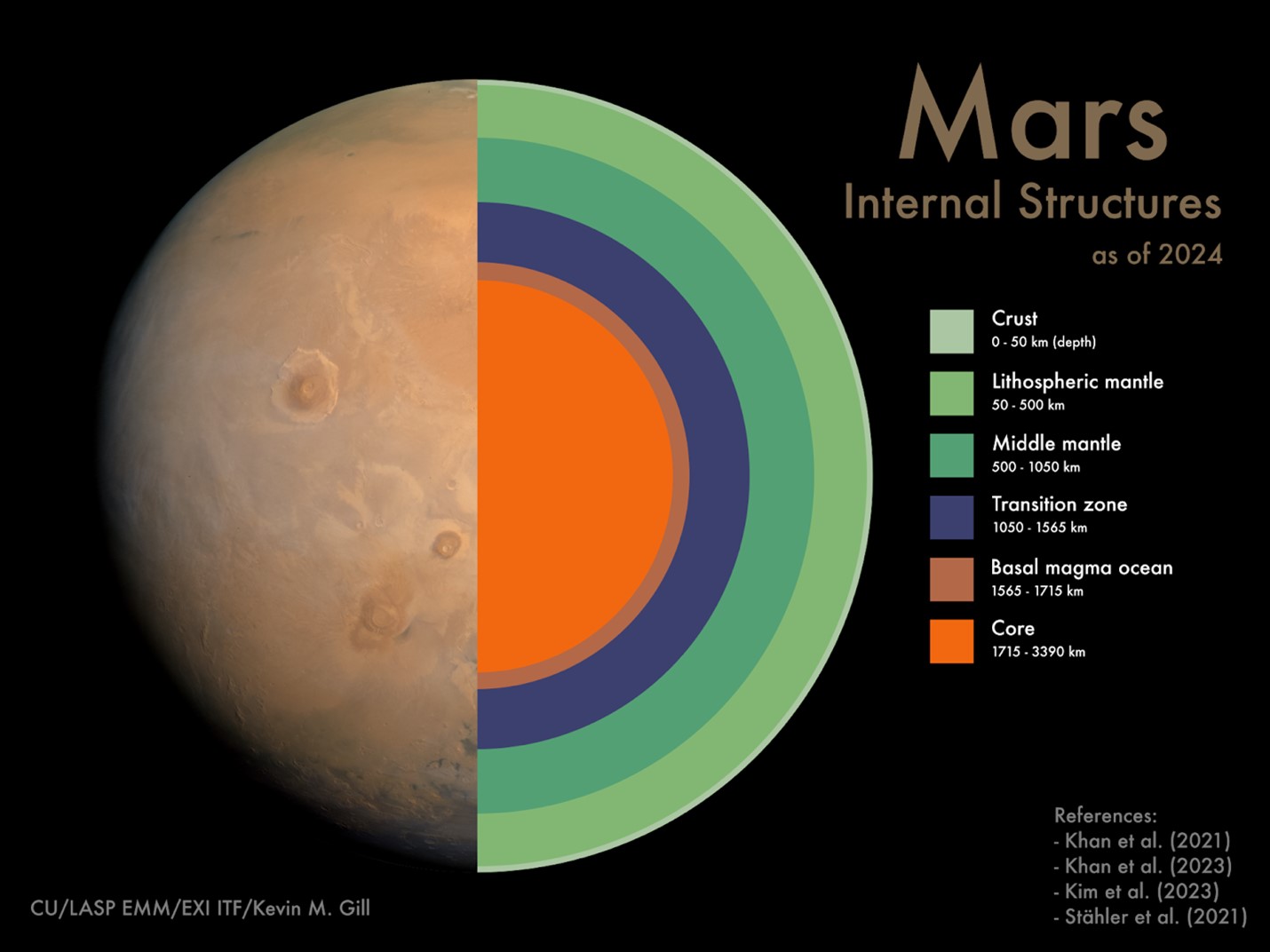
The InSight Mission was developed to explore the Mars interior and in 2024 developed the above model of the planet including three major layers: crust, mantle, and core. The core is completely molten.
Credit: AstroChara, CC0, via Wikimedia Commons
- Research into Martian meteorites has revealed new insights into Earth’s history, thanks to studies like those led by Northern Arizona University researcher Valerie Payré.
- When rocks are ejected from Mars by impacts and eventually land on Earth, we can get a glimpse into planetary processes that shaped both Mars and Earth billions of years ago. The geochemical records from the early solar system within the samples offer clues about the conditions under which both planets formed.
- Martian meteorites also have highlighted volcanic and sedimentary processes that are essential for understanding how planetary environments evolved to support liquid water and potentially life.
- The meteorites also help calibrate models that project the development of distinct layers like crust, mantle, and core in planets. By comparing Martian meteorite mineral composition with Earth’s rocks, scientists can better understand the diversity of volcanic activity and crust formation in the early solar system.
- Such studies emphasize the interdependence of impacts, magmatism, and surface conditions in shaping planetary surfaces, shedding light on Earth’s geological history through its Martian cousin.
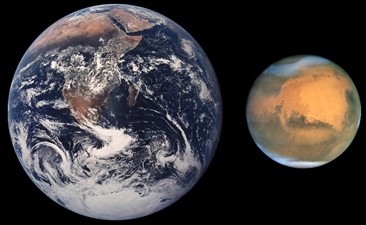
By studying Martian meteorites, we can discover the mysteries of how our two planets developed in two different paths?
Credit: RHorning and later modified by Scooter20, public domain, via Wikimedia Commons
Episode Script
Sometime long ago, a small meteorite crashed into the sands of the Sahara. In 2011, scientists discovered it and dubbed it NWA 7034 – nickname: Black Beauty. It was soon recognized as the rarest meteorite on Earth.
Black Beauty came from Mars. Scientists know that because oxygen isotopes trapped within it match those in the Martian atmosphere.
Because that atmosphere is so thin, Mars is not well protected from asteroids. When they impact the surface, they explode off chunks of rock. Some of these travel out into space, where they drift for years, before becoming trapped in Earth’s stronger gravity field, and pulled to us.
Most burn up as they rocket through our much thicker atmosphere. We’ve only recovered 74,000 meteorites worldwide that have made it to Earth’s surface.
The large majority are fragments of asteroids; less than 400 are from Mars. And of those, there is only one Black Beauty.
That’s because it’s brecciated, meaning made up of tiny chunks of many different rocks from the surface of Mars, that have been accreted together over time.
Geologists can study how the breccia formed and ‘read’ each of the small fragments within it to interpret their origins, and better understand the geology of Mars.
That makes Black Beauty, though just the size of a tennis ball, the most studied meteorite on Earth.

